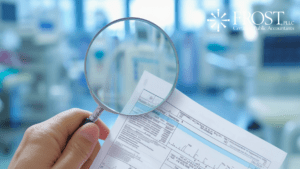Maximize Profits: The Important Guide to Food Processing Accountancy
This guide explores the detailed connection between price management, labor performance, and monetary reporting, supplying insights that can simplify procedures and boost decision-making. Secret audit methodologies, combined with the calculated use of technology, can transform monetary efficiency.
Understanding Food Processing Costs
Comprehending the prices related to food processing is vital for services intending to preserve success and competitiveness in a vibrant market. The food processing sector incorporates numerous costs, including raw materials, labor, equipment, and expenses upkeep. Each of these parts substantially influences general expenses and can differ commonly based on elements such as production volume, geographical place, and market problems.
Basic material prices usually stand for the biggest portion of expenses, requiring cautious monitoring of sourcing and supply degrees. Labor costs also play an important function, as knowledgeable employees are important for preserving high quality and effectiveness. Overhead expenses, including utilities, lease, and administrative costs, need to be checked to guarantee they do not deteriorate earnings margins.

Secret Accountancy Concepts
Reliable monitoring of food handling prices counts on a solid foundation of bookkeeping principles. These principles act as the framework for recording, evaluating, and translating monetary information, making certain that food handling organizations can accurately assess their profitability and operational efficiency.
First, the principle of consistency is vital. It mandates that businesses apply the very same accountancy approaches gradually, assisting in trustworthy comparisons of financial declarations. Next, the matching principle requires that costs be tape-recorded in the exact same duration as the profits they help generate, which is essential for precise profit measurement.
Furthermore, the expense principle dictates that properties should be videotaped at their original acquisition cost, offering a clear basis for devaluation and possession evaluation. The amassing basis of accountancy additionally plays a significant role, as it identifies expenses and earnings when they are incurred, as opposed to when cash modifications hands. This strategy supplies an extra practical sight of financial wellness.
Lastly, the preservation principle encourages that potential costs and liabilities should be identified as quickly as they are possible, while incomes must only be identified when they are ensured. By sticking to these essential accountancy principles, food processing firms can improve their economic oversight and tactical decision-making.
Financial Coverage Essentials
Monetary coverage is critical for food processing companies, as it supplies a clear sight of their financial performance and position. Agribusiness consulting. Prompt and exact economic records enable management to make educated choices, making certain the firm remains competitive and lucrative in a difficult market
Secret elements of monetary coverage include the earnings statement, balance sheet, and capital statement. The income statement offers insights right into earnings, prices, and internet earnings, exposing functional effectiveness. The annual report presents a snapshot of the company's properties, liabilities, and equity, offering an understanding of monetary stability and solvency. The capital statement tracks the inflow and discharge of cash money, helping services manage liquidity effectively.
Additionally, adhering to Generally Accepted Audit Principles (GAAP) or International Financial Reporting Requirements (IFRS) is necessary for consistency and reliability - Agribusiness consulting. Normal monetary coverage not only aids interior management yet also meets outside commitments to stakeholders, financiers, and regulative bodies
Ultimately, durable financial coverage is important for strategic planning and risk management, allowing food processing companies to navigate market changes and profit from growth possibilities efficiently.

Cost Control Approaches
Preserving a strong monetary setting is not only concerning precise coverage; it likewise entails executing efficient expense control techniques. In the food processing sector, where margins can be tight, regulating costs is necessary for taking full advantage of success.
One trick technique is to carry out regular cost analysis. By assessing the costs connected with raw products, labor, and overhanging, organizations can determine areas where savings can be attained. Carrying out a standardized budgeting process permits for far better projecting and tracking of expenditures, allowing prompt adjustments to be made.
One more efficient strategy is to bargain desirable terms with vendors. Establishing lasting connections can lead to volume discounts, which directly minimize the price of products sold. Additionally, buying staff member training can enhance productivity and decrease waste, adding to total price effectiveness.
Last but not least, adopting lean manufacturing concepts can simplify procedures by removing unnecessary actions in the manufacturing procedure. This not only decreases waste however likewise boosts top quality and speed. By concentrating on these expense control strategies, food processing firms can improve their financial efficiency and make certain lasting growth in see this page a competitive marketplace.
Leveraging Innovation in Accountancy
Accepting technology in bookkeeping can substantially enhance efficiency and accuracy within the food processing industry (Agribusiness discover this consulting). By incorporating innovative software application options, food mill can automate repeated tasks such as invoicing, inventory, and pay-roll monitoring. This not only decreases the potential for human mistake but likewise allows money groups to concentrate on strategic decision-making instead of mundane management obligations
Cloud-based accounting systems give real-time accessibility to economic information, enabling businesses to keep an eye on capital, expenses, and productivity from anywhere. This flexibility is particularly useful in a dynamic industry where expense fluctuations and supply chain challenges are commonplace. In addition, utilizing information analytics tools equips companies to remove actionable insights from their economic data, bring about educated service choices that can drive productivity.
Moreover, leveraging technologies like Artificial Knowledge (AI) and Artificial Intelligence (ML) can improve projecting abilities, enabling better need preparation and resource allocation. As governing conformity ends up being progressively complicated, technology can likewise aid in making sure adherence to financial coverage criteria and food security policies. Ultimately, buying technical improvements in accountancy is not simply a functional improvement; it is a calculated necessity for food handling companies intending to thrive in a competitive industry.
Conclusion
To conclude, reliable monitoring of food processing prices is critical for boosting productivity within the market. By applying key audit principles and guaranteeing accurate monetary coverage, services can identify locations for renovation. Carrying out robust cost control strategies and leveraging technology for automation and information analytics better maximize functional effectiveness. Ultimately, an extensive understanding of these aspects promotes educated decision-making, contributing to lasting growth and improved financial performance in the affordable landscape of food processing.
Comprehending the costs associated with food handling is critical for companies intending to maintain productivity and competition in a dynamic market. Comprehending these price components permits food handling businesses to create efficient click budgeting strategies, maximize resource allotment, and recognize locations for cost reduction. Eventually, a thorough understanding of food handling costs is necessary for notified decision-making and accomplishing lasting growth within the sector.
Furthermore, the cost principle dictates that possessions ought to be recorded at their original acquisition price, supplying a clear basis for devaluation and property valuation. By focusing on these cost control methods, food handling companies can improve their financial performance and guarantee lasting development in an affordable industry.